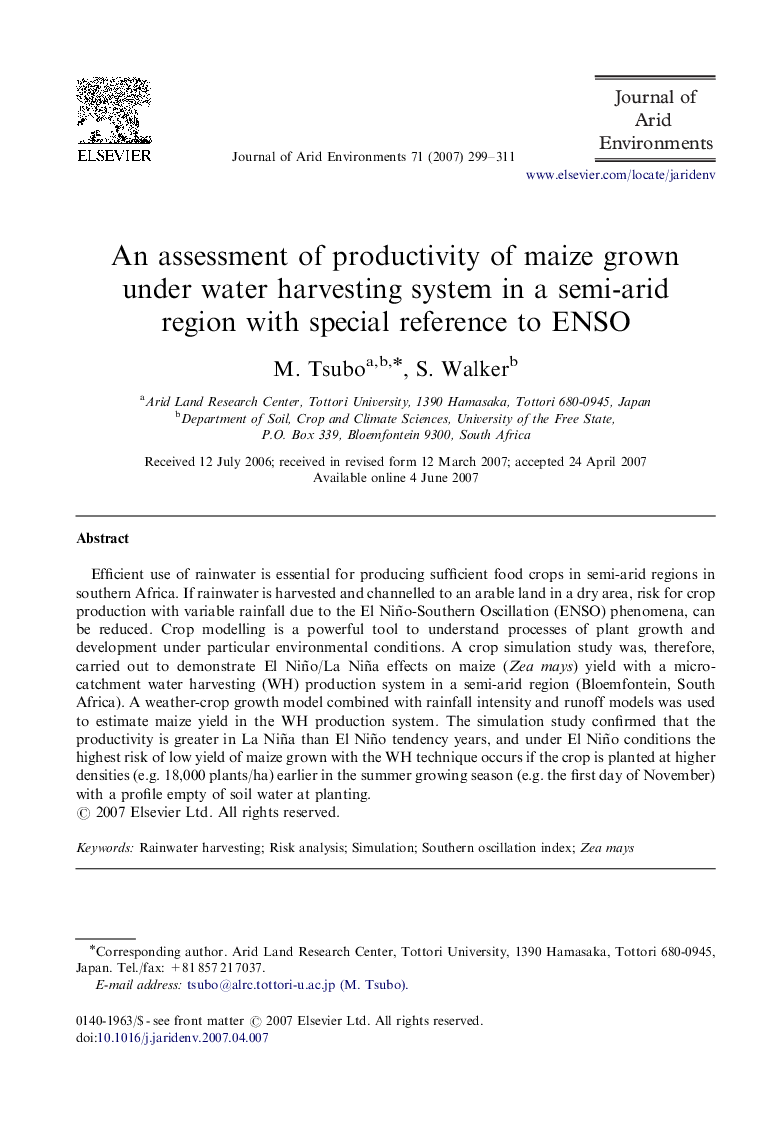| Article ID | Journal | Published Year | Pages | File Type |
|---|---|---|---|---|
| 4394452 | Journal of Arid Environments | 2007 | 13 Pages |
Abstract
Efficient use of rainwater is essential for producing sufficient food crops in semi-arid regions in southern Africa. If rainwater is harvested and channelled to an arable land in a dry area, risk for crop production with variable rainfall due to the El Niño-Southern Oscillation (ENSO) phenomena, can be reduced. Crop modelling is a powerful tool to understand processes of plant growth and development under particular environmental conditions. A crop simulation study was, therefore, carried out to demonstrate El Niño/La Niña effects on maize (Zea mays) yield with a micro-catchment water harvesting (WH) production system in a semi-arid region (Bloemfontein, South Africa). A weather-crop growth model combined with rainfall intensity and runoff models was used to estimate maize yield in the WH production system. The simulation study confirmed that the productivity is greater in La Niña than El Niño tendency years, and under El Niño conditions the highest risk of low yield of maize grown with the WH technique occurs if the crop is planted at higher densities (e.g. 18,000 plants/ha) earlier in the summer growing season (e.g. the first day of November) with a profile empty of soil water at planting.
Related Topics
Physical Sciences and Engineering
Earth and Planetary Sciences
Earth-Surface Processes
Authors
M. Tsubo, S. Walker,
